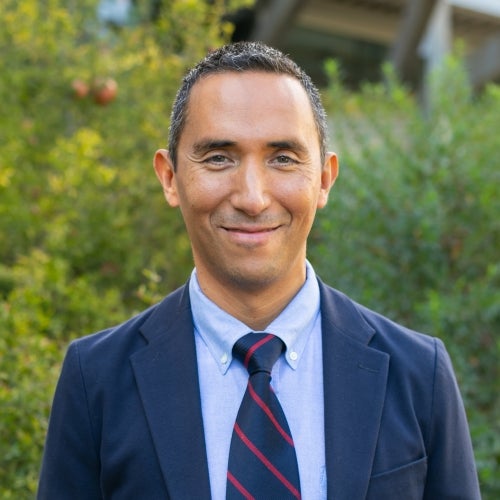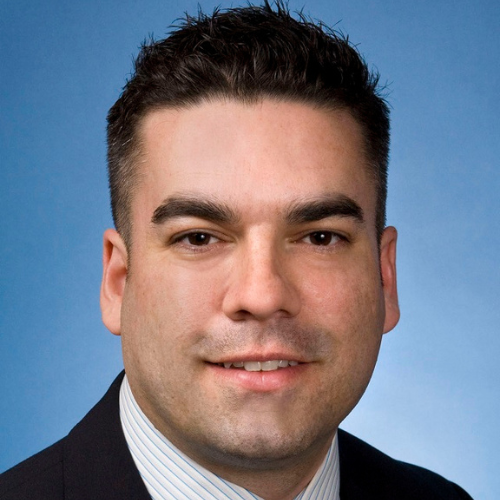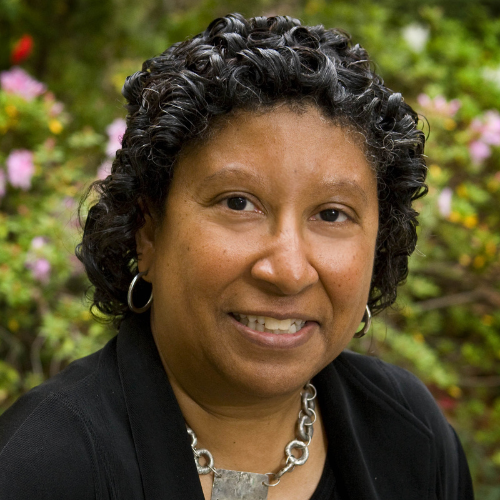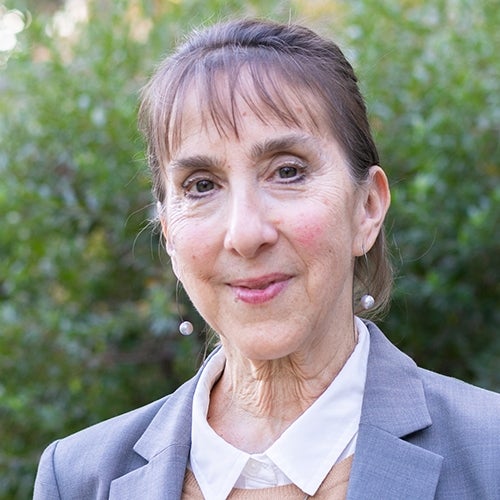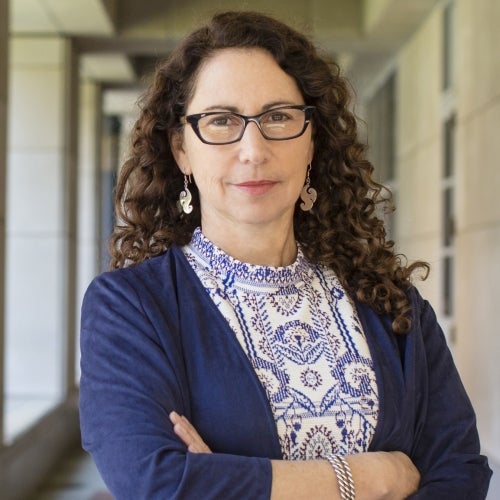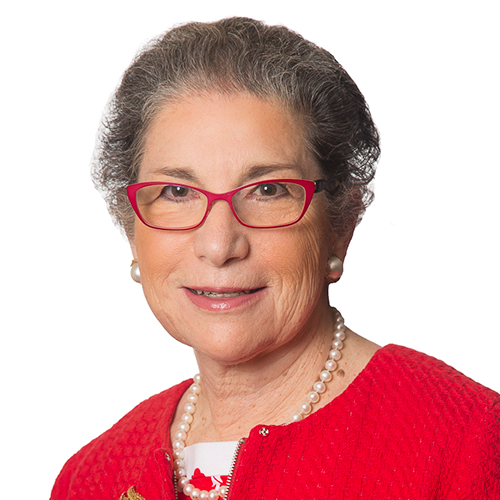UCLA Fielding School researchers find Latino Californians among hardest hit by pandemic
Dr. David Hayes-Bautista and Dr. Paul Hsu, both with UCLA FSPH, have found that Latino Californians are among the hardest hit by the pandemic .

The COVID-19 surge of summer through winter 2020‒2021 devastated all population groups. Yet when the death rates of Latinos are compared to non-Hispanic white (NHW) rates in every age group, there is a significant disparity between the two: Latino death rates are from two to seven times higher than NHW rates.
“COVID-19‒related deaths can be considered a ‘lagging indicator’ for tracking an outbreak,” explained Dr. Paul Hsu, UCLA Fielding School of Public Health assistant professor of epidemiology. “They trail infections by a number of weeks and confirm what has already occurred. Unfortunately, they are the summary statistic of this deadly pandemic.”
Age 80+
Latino death rate more than twice the NHW rate. During this six-month period, Latino death rates for this age group were consistently more than twice as high as NHW rates. The Latino death rate rose from 446.39 to 1,826.54 between July and January 2020-2021.
“Not only was the death rate twice as high for Latino elderly, age 80 and older,” said Dr. David E. Hayes-Bautista, UCLA Fielding School of Public Health professor of health policy and management and distinguished professor of medicine at the UCLA David Geffen School of Medicine. “Our research into Latino hospital use before COVID-19 has consistently shown that older Latino elderly are less likely to be covered by Medicare for their hospital costs.”
Ages 65-79
Latino death rate more than four times the NHW rate. During this six-month period, Latino death rates for this age group were consistently over four times higher than NHW death rates. The Latino death rate rose from 141.57 to 681.31 during this period.
“Before the pandemic, when Latinos aged 65+ were discharged from a hospital, they were less likely than NH whites to be discharged into a skilled nursing facility, and more likely to be discharged directly to their homes, which obviously were not equipped to provide quality care," Hayes-Bautista said.
Ages 50-64
Latino death rate nearly six times the NHW rate. During this six-month period, Latino death rates for this age group were consistently about six times higher than NHW death rates. The Latino death rate rose from 42.57 to 207.32 from July to January.
“These older middle-aged workers are usually in their prime earning years, and our economy is losing Latino prime earners at six times the rate of NH white prime earners,” Hayes-Bautista said.
Ages 35-49
Latino death rate about seven to eight times the NHW rate. During this six-month period, Latino death rates for this age group were consistently about seven to eight times higher than NHW rates. The Latino rate rose from 11.3 deaths per 100,000 to 45.33.
“Workers in this age group generally are at mid-career, a time to consolidate their workplace experience to move into their prime years," Hayes-Bautista said. "We lose Latino mid-career workers at seven to eight times the rate that we lose NH white mid- careers.”
Ages 18-34
Latino death rate more than five times the NHW rate. During this six-month period, Latino death rates for this age group were consistently about five times higher than NHW rates. The Latino death rate for young adults rose from 1.52 to 8.40.
“Young adults are finishing their education, starting their careers, forming households, and generally preparing for their next decades of work and family life,” Hayes-Bautista said. “We are are losing Latino members of this cohort, so important for society’s future, at five times the rate of NH white members.”
The surge from the summer through the winter of 2020‒2021 affected all races/ethnic groups, and California’s Latino population was among the hardest hit. In every age group, the disparity between Latino and non-Hispanic white death rates remained roughly the same throughout this period, ranging from two to seven times as high, depending on age.
Latinos are over represented in many essential worker categories, from farm workers who provide California’s food to construction workers who build the state’s houses, all while exposing themselves to infection. The state must ensure that these populations receive priority for vaccinations and other medical care, so that California can recover and continue to go about its business.
Latinos a special target of COVID-19
Latinos’ strong work ethic means that Latino households have more wage earners per household than non-Hispanic white households. Nationally, Latinos have an average of 1.6 wage earners per household, compared to 1.2 for non-Hispanic white households. This means that Latino households have more adults leaving the house every day, who are then often exposed to coronavirus-positive clients and co-workers during work hours.
“Office-based wage earners have been able to minimize their exposure to coronavirus infection by sheltering at home and working online,” Hayes-Bautista said. “But Latinos are over- represented in occupations that require wage earners to leave their homes and interact with co-workers and clients, such as farm workers and grocery store clerks.”
These Latino wage earners then go home to households that have more children in them. On average, there are 1.0 children per Latino household, but only 0.5 children in non-Hispanic white ones.
The Centers for Disease Control (CDC) has noted that up to half of COVID-infected children may be asymptomatic; that is, they have the virus, but do not show symptoms that would put them under surveillance.
“Children with COVID-19 may have mild, non-specific symptoms, or no symptoms at all,” Hsu said. “But they can still transmit the virus from one adult to others.”
Therefore COVID-19 has two increased opportunities to infect Latino households: more wage earners who can be exposed to the virus at work and bring the infection home with them, and more children who can spread infection to family members while remaining asymptomatic themselves.
Because they typically have more wage earners and more children, Latino households contain nearly one more person per unit than non-Hispanic white households.
So, in effect, COVID-19 punishes Latino households for working hard—which exposes more wage earners to infection—and for having more people, especially children, per household.
Since March of 2020, Latinos have held many of the essential jobs that have kept California well-fed and functioning. Unfortunately, their reward has been the highest rate of infections and deaths in the state.
Contact: Adriana Valdez, (310) 794-0663, cesla@ucla.edu
The UCLA Fielding School of Public Health, founded in 1961, is dedicated to enhancing the public's health by conducting innovative research, training future leaders and health professionals from diverse backgrounds, translating research into policy and practice, and serving our local communities and the communities of the nation and the world. The school has 631 students from 26 nations engaged in carrying out the vision of building healthy futures in greater Los Angeles, California, the nation and the world.
Attachments
Report 13Faculty Referenced by this Article

EMPH Academic Program Director with expertise in healthcare marketing, finance, and reproductive health policy, teaching in the EMPH, MPH, MHA program

Dr. Michelle S. Keller is a health services researcher whose research focuses on the use and prescribing of high-risk medications.
Nationally recognized health services researcher and sociomedical scientist with 25+ years' experience in effectiveness and implementation research.

Professor of Community Health Sciences & Health Policy and Management, and Associate Dean for Research

Dr. Joseph Davey is an infectious disease epidemiologist with over 20 years' experience leading research on HIV/STI services for women and children.

Robert J. Kim-Farley, MD, MPH, is a Professor-in-Residence with joint appointments in the Departments of Epidemiology and Community Health Sciences

Dr. Ron Andersen is the Wasserman Professor Emeritus in the UCLA Departments of Health Policy and Management.

Dr. Anne Rimoin is a Professor of Epidemiology and holds the Gordon–Levin Endowed Chair in Infectious Diseases and Public Health.






